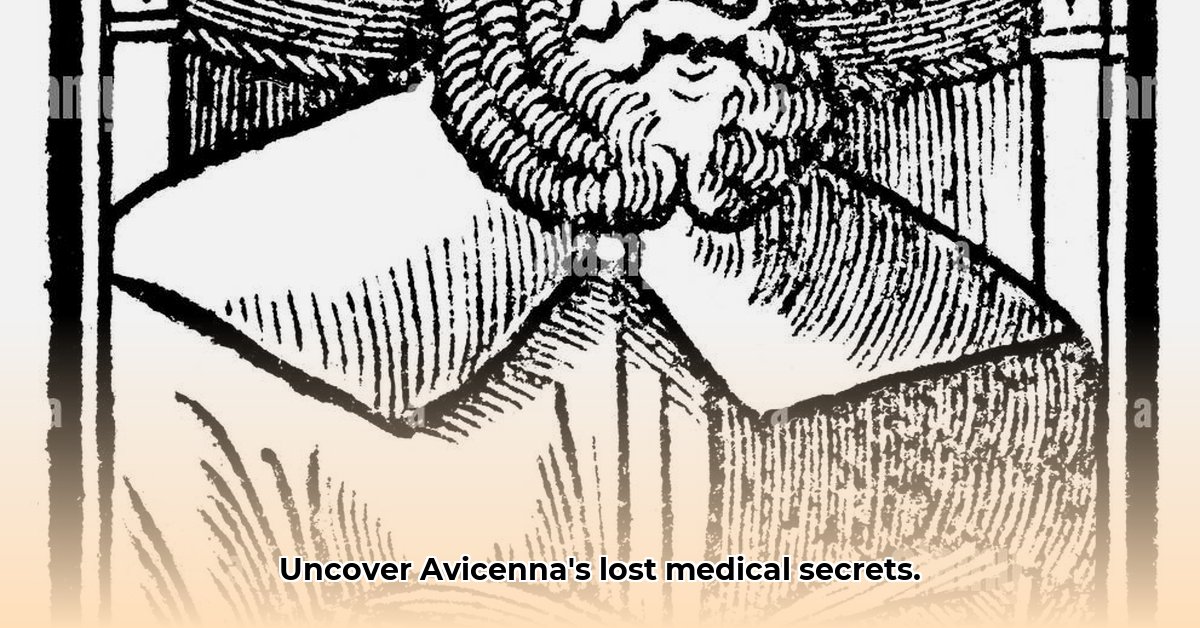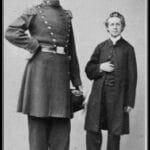Have you heard of Avicenna? Unless you’re a historian of science or medicine, the name might not ring a bell. But this 11th-century Persian scholar was a towering figure, a true polymath whose Canon of Medicine shaped medical practice for over half a millennium. Think of him as a scientific rockstar, whose work blended ancient Greek wisdom with insights from Persia, India, and beyond. This article explores Avicenna’s remarkable life, unpacks the secrets of his influential Canon, and examines its lasting legacy on medicine and thought. For another example of a scientific library’s impact, see Newton’s library.
Ibn Sina (Avicenna): A Life of Learning and Innovation
Born Ibn Sina in 980 CE near Bukhara (present-day Uzbekistan), Avicenna—as he was known in the Latin West—was far more than just a physician. He was a philosopher, astronomer, mathematician, poet, and jurist. His intellectual curiosity knew no bounds, and he reportedly mastered all known philosophy by the age of 18. A prodigious writer, Avicenna is credited with authoring hundreds of works. Though many have been lost to time, his Canon of Medicine remains a testament to his genius and a cornerstone of medical history.
The Canon of Medicine: A Synthesis of Ancient Knowledge
Completed around 1025 CE, The Canon of Medicine (al-Qānūn fī aṭ-Ṭibb in Arabic) was not simply a compilation of existing medical knowledge; it was a systematic and comprehensive synthesis of Greco-Roman medicine (particularly Galen), Persian medicine, Indian medicine, and elements of Chinese medical thought. Avicenna meticulously organized this vast body of information, adding his own observations and insights to create a unified and authoritative medical text. Imagine a single book containing the sum total of medical wisdom from across the ancient world—that was the power and scope of The Canon. For centuries, it served as the standard textbook for medical education in both the Islamic world and Europe.
Unpacking the Five Books of The Canon
The Canon of Medicine is divided into five books, each covering a distinct aspect of medical knowledge:
-
Book One: Principles of Medicine: This book lays the theoretical foundation for the entire work, exploring the basic principles of medicine, anatomy, physiology, and general therapeutics. It delves into the elements, temperaments, humors, and the functions of the human body, providing a holistic understanding of health and disease.
-
Book Two: Materia Medica: This is a comprehensive catalog of approximately 800 “simple” medical substances—primarily plants, minerals, and animal products—arranged alphabetically. For each substance, Avicenna describes its properties, uses, and preparation methods, creating an invaluable resource for physicians and apothecaries.
-
Book Three: Special Pathology: This book focuses on diseases specific to individual organs and body parts, progressing systematically from the head to the feet. For each disease, Avicenna describes its etiology, symptoms, diagnosis, prognosis, and treatment, providing a detailed guide for clinical practice.
-
Book Four: General Pathology: This book covers diseases and conditions that affect the entire body, such as fevers, poisons, wounds, and fractures. It also includes a treatise on personal hygiene, covering topics such as diet, exercise, and skincare.
-
Book Five: Formulary: This book lists approximately 650 compound drugs and complex recipes, attributing them to various Arabic, Indian, and Greek sources. Avicenna provides detailed instructions for their preparation and application, making it a practical guide for pharmacists and physicians.
Avicenna’s Contributions: Beyond Compilation
While The Canon was a synthesis of existing knowledge, Avicenna made significant original contributions to medicine. He provided detailed descriptions of diseases such as meningitis and differentiated mediastinitis from pleurisy. He recognized the contagious nature of tuberculosis and suggested quarantine as a means of controlling its spread. Avicenna also emphasized the importance of environmental factors, such as water and soil quality, in the distribution of diseases. Furthermore, he recognized the connection between psychology and health, anticipating the field of psychosomatic medicine. His meticulous observations and innovative insights elevated The Canon beyond a mere compilation, making it a truly groundbreaking work.
The Canon’s Enduring Influence
The Canon of Medicine was translated into Latin in the 12th century by Gerard of Cremona, opening the door for its widespread adoption in European medical schools. For centuries, it served as the standard textbook for medical education, shaping the curriculum and practice of medicine across the continent. Its influence extended beyond Europe, as it was also widely used in the Islamic world and translated into numerous other languages, including Hebrew, Persian, and German.
William Osler, a renowned physician and medical historian, described The Canon as “the most famous medical textbook ever written,” noting that it remained “a medical bible for a longer time than any other work.” George Sarton, a historian of science, called it “an immense encyclopedia of medicine” containing “some of the most illuminating thoughts” on a wide range of medical topics.
The Decline and Legacy
By the 16th century, The Canon‘s influence began to wane as new discoveries in anatomy, physiology, and clinical medicine challenged its authority. The rise of humanism and the rediscovery of classical Greek texts also contributed to its decline. However, The Canon left an indelible mark on the history of medicine. It preserved and transmitted ancient medical knowledge, fostered cross-cultural exchange, and provided a systematic framework for medical education and practice. Even today, scholars study The Canon to gain insights into the history of medicine, the evolution of scientific thought, and the enduring quest to understand the human body.
Avicenna’s Contributions: A Quick Look
| Area of Influence | Specific Contribution | Lasting Significance |
|---|---|---|
| Pharmacology | Cataloged approximately 800 simple drugs and 650 compound medications | Laid a foundation for modern pharmacology; some traditional remedies are still being studied for potential therapeutic benefits |
| Diagnostics | Detailed descriptions of diseases like meningitis; emphasized pulse diagnosis | Advanced diagnostic techniques; provides insight into historical understanding of diseases |
| Integrative Medicine | Recognized the connection between psychology and health | Foreshadowed the field of psychosomatic medicine and the importance of a holistic approach to healthcare |
| Medical Education | Served as the standard textbook for medical education in Europe and the Islamic world for centuries | Shaped the curriculum and practice of medicine; fostered a global medical community |
| Public Health | Advocated for quarantine to prevent the spread of contagious diseases; emphasized the importance of clean water and sanitation | Early understanding of public health principles; influenced the development of preventative medicine |
The story of Avicenna and The Canon of Medicine is a testament to the power of human intellect, the importance of cross-cultural exchange, and the enduring quest to understand and heal the human body. His legacy continues to inspire scientists, historians, and healthcare professionals around the world.
- The Shocking History of Lobotomy: A Nobel Prize Nightmare - August 1, 2025
- Eleanor Roosevelt: A Champion of Human Rights: Enduring Legacy - July 31, 2025
- The Great Emu War: Australia’s Bizarre Military Failure: 1932’s Unlikely Defeat - July 31, 2025















